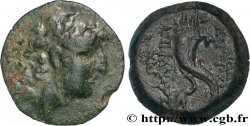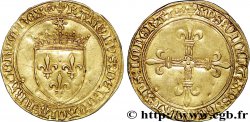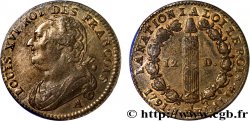v59_0033 - SIRIA - REGNO DI SIRIA - ANTIOCO VIII GRYPOS Tétradrachme
MONNAIES 59 (2013)
Prezzo di inizio : 650.00 €
Valutazione : 950.00 €
Prezzo realizzato : 767.00 €
Numero di offerte : 2
Offerta maxima : 860.00 €
Prezzo di inizio : 650.00 €
Valutazione : 950.00 €
Prezzo realizzato : 767.00 €
Numero di offerte : 2
Offerta maxima : 860.00 €
Tipo : Tétradrachme
Data: c. 115-113 AC.
Nome della officina / città: Aké-Ptolémais,Phénicie
Metallo : argento
Diametro : 31,5 mm
Asse di coniazione : 12 h.
Peso : 16,06 g.
Grado di rarità : R2
Commenti sullo stato di conservazione:
Exemplaire de qualité exceptionnelle sur un flan très large et ovale, parfaitement centré des deux côtés. Magnifique portrait d’Antiochus VIII de haut relief avec la stemma bien visible. Joli revers, bien venu à la frappe, finement détaillé. Très jolie patine de médaillier avec des reflets mordorés. Conserve l’intégralité de son brillant de frappe et de son coupant d’origine
N° nelle opere di riferimento :
Pedigree :
Cet exemplaire provient de la vente Italo Vecchi XIV, n° 681
Diritto
Titolatura diritto : ANÉPIGRAPHE.
Descrittivo diritto : Tête diadémée d’Antiochus VIII à droite, entourée de la stemma.
Rovescio
Descrittivo rovescio : Zeus Uranios nu jusqu’à la ceinture, debout à gauche, la tête surmontée d'un croissant, à demi-nu, la chlamyde sur l'épaule, tenant une étoile à huit rais de la main droite et de la gauche un sceptre long (emblème luni-solaire).
Legenda rovescio : BASILEWS// ANTIOCOU// EPI-FANOUS// DAR
Traduzione rovescio : (du roi Antiochus glorieux).
Commento
Sur cet exemplaire, Antiochus n’a pas l’appendice nasal proéminent qui le caractérise (grypus). La stemma est bien visible sur notre exemplaire. Il y avait trois exemplaires de ce type dans le trésor de Kessab (IGCH. 1568), enfoui vers 110 avant J.-C. et qui contenait plus de 388 monnaies d’argent dont 102 tétradrachmes d’Antiochus VIII avec 70 pièces pour l’atelier d’Aké-Ptolémaïs.
In this example, Antiochus does not have the prominent nasal appendage that characterizes him (grypus). The stemma is clearly visible on our example. There were three examples of this type in the Kessab treasure (IGCH. 1568), buried around 110 BC and which contained more than 388 silver coins including 102 tetradrachms of Antiochus VIII with 70 coins for the Aké-Ptolemais mint
In this example, Antiochus does not have the prominent nasal appendage that characterizes him (grypus). The stemma is clearly visible on our example. There were three examples of this type in the Kessab treasure (IGCH. 1568), buried around 110 BC and which contained more than 388 silver coins including 102 tetradrachms of Antiochus VIII with 70 coins for the Aké-Ptolemais mint







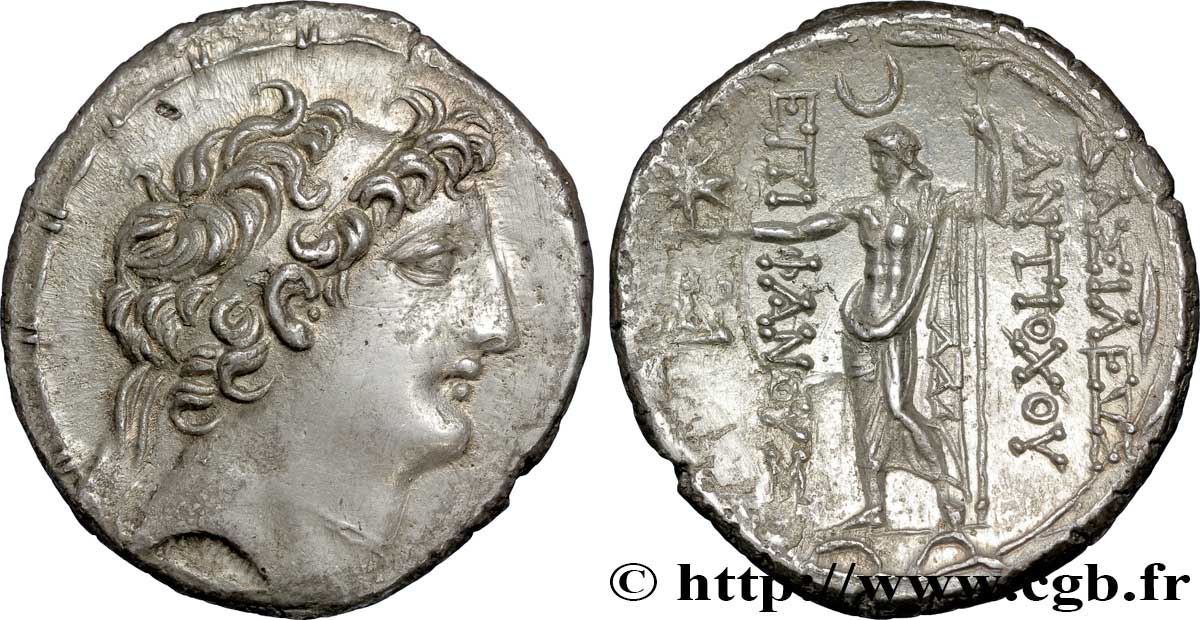
 Segnalare un errore
Segnalare un errore Stampate la pagina
Stampate la pagina Condividi mia selezione
Condividi mia selezione Fai una domanda
Fai una domanda Consegnare / vendere
Consegnare / vendere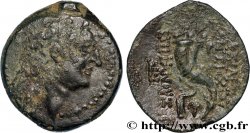
 Descrittivo
Descrittivo



